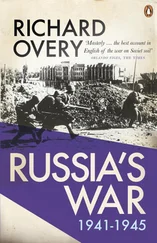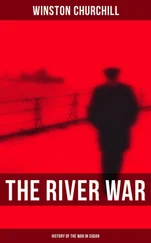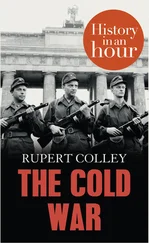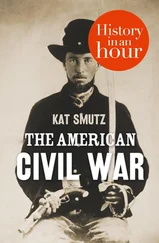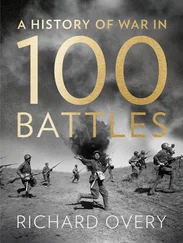2. BATTLE OF CANNAE
2 August 216BCE
The Battle of Cannae is one of the most famous battles of all time. The catastrophic defeat of the Roman army by Hannibal’s smaller force has been regularly invoked to describe a particularly dramatic or heavy defeat. The myth that surrounded Hannibal as a general who carried victory with him wherever he went has lived down the ages. Hannibal’s own presence at Cannae and his operational genius explain an outcome that might well have gone another way.
The North African empire of Carthage dominated present-day Libya, Tunisia, Algeria and areas of conquest as far as Spain. The rising might of Rome in the third century BCE challenged Carthaginian ambitions and led to a series of Punic Wars between the two rival powers. In the second of these, at some point in 218 BCE, Hannibal persuaded the Carthaginian senate to let him set off on an epic journey across Spain, present-day France and over the Alps into Italy. What his ultimate objective was remains unclear, but he took with him an invasion force of probably 100,000 men, many of them Spanish mercenaries, and a huge train of supplies and animals, including his famous elephants. The journey itself undermined the scale of his ambitions. By the time the Alps were reached, he was down to 50,000 men; after crossing the mountains in autumn snow, he arrived in the northern Po Valley with only 20,000 foot soldiers and 6,000 cavalry to invade the Roman heartland. Bolstered by Gauls who joined his cause, Hannibal meted out heavy defeats on the Roman armies sent north to intercept him. As he moved south, Rome was gripped by panic. Hannibal’s military reputation inflated the threat out of all proportion. Lacking a secure base, living off the land, and not entirely sure of his Gallic allies, Hannibal chose to inflict on Rome what damage he could while himself avoiding defeat.
In 216 BCE, Hannibal moved into Apulia in south-central Italy and in June that year set up his camp at the hilltop city of Cannae, guarding the route to the rich grain-lands of the south. The Romans had begun to create a force to eliminate the threat from the invader. Four new legions were raised, bringing the Romans’ strength to around 40,000 men with 40,000 allied soldiers, but only a small number of experienced cavalry. The two Roman consuls for 216 BCE, Gaius Terentius Varro and Lucius Aemilius Paullus, led the new army south to meet Hannibal, whose forces they probably outnumbered by two to one. At the beginning of August, the Roman army arrived at the flat plain in front of Cannae. As was customary, the consuls took turns to command on alternate days; Varro was the more audacious and on 2 August 216 BCE he led his force, spread out over nearly a mile, onto the plain to do battle. Accounts of the battle suggest that the infantry were packed between fifty and seventy ranks thick. The Roman cavalry were on one wing and the allied cavalry on the other, with a river protecting one flank. Roman battlefield strategy was to smash the enemy by sheer weight of numbers.
At Cannae, Hannibal showed his exceptional grasp of the battlefield. He formed his infantry into a shallow force, weaker in the centre, with his veteran Libyans on both flanks. On one wing were Numidian cavalry, on the other Spanish and Gallic, 10,000 experienced horsemen who greatly outnumbered the 6,000 Roman horses. His infantry were ordered to form a bulge outwards with the object of enticing the Roman legions into the arc, which would then bend inwards, giving the wings the chance to encircle and annihilate the enemy while the cavalry defeated the enemy horsemen and turned to attack the Roman army from the rear. It was a textbook operation and functioned like clockwork. The Romans pressed forward into the yielding arc, only to find themselves surrounded as the Libyan infantry advanced on the flanks. The Carthaginian cavalry swept aside Rome’s horsemen and plunged into the Roman rear. Cannae was a massacre, the worst defeat the Roman army ever suffered. An estimated 50,000 died that day; others were taken prisoner. Only 14,500 survived out of an army of 80,000. Hannibal lost 6,000, two-thirds of them Gauls. No effort was made to bury so many dead, which included Paullus and eighty Roman senators. The gold rings and ornaments were collected from the dead and sent to Carthage to show the extent of the victory and to demonstrate the need for reinforcements.
Hannibal could perhaps have marched on Rome and brought the empire to its knees. The disaster at Cannae left the city briefly defenceless, though new legions were immediately raised. The Senate ordered that there should be no weeping, and buried two Greeks and two Gauls alive to propitiate the gods. But Hannibal perhaps sensed that his depleted force was not large enough to march the 500 kilometres (300 miles) to Rome and to invest the city. Carthage was too busy fighting in Sicily, Spain and Sardinia to send help, so Hannibal undertook limited campaigns in southern Italy for a further fourteen years, too dangerous an opponent for the Romans to challenge again. To scare the citizens, he took 2,000 cavalry up to the gates of the city in 212 BCE, but could not risk a siege.
When Hannibal’s brother Hasdrubal came to join him in 207 BCE by the same awkward route over the Alps, his forces were devastated near present-day Rimini and Hasdrubal was killed. Carthage was undermined on every front except in the south of Italy, where Hannibal was isolated. In 202 BCE, he finally left Italy for good to return to Carthage. A battlefield genius, he did not know how to win the war.
3. BATTLE OF ACTIUM
2 September 31BCE
The victory won at Actium off the coast of Greece by Julius Caesar’s adopted son, Gaius Julius Caesar Octavianus (better known as Octavian, and soon to become Augustus) marked a decisive end to the long period of savage civil wars that had plagued Republican Rome from the middle years of the first century BCE. The battle was fought between the two most powerful men in the Roman Republic: Octavian, ruler of the western half of the Roman territories; and Marcus Antonius (better known as Mark Antony), ruler of the eastern region. Octavian had little reputation as a commander or soldier, but from an early age he had understood how to balance the arts of politics and war. Mark Antony was out-thought by a leader whose political intelligence and strategic calculation opened the way to a new imperial age.
After the assassination of Julius Caesar in 44 BCE, there followed an uneasy decade as Caesar’s supporters fought against the defenders of Republican Rome and rival claimants to his mantle. Octavian became the dominant figure in Italy because he was more clear-sighted and unscrupulous than his competitors. Though he had no constitutional basis for his claim to rule, he was backed by soldiers loyal to the legacy of the great Caesar, and had enough money to buy the loyalty of others. He collaborated with Antony for much of the decade, and relied on Antony’s military help against the armies raised by Caesar’s assassins. But by 34 BCE, when Antony married the Egyptian queen Cleopatra in a theatrical ceremony in Alexandria, Octavian could see the possibility that Mark Antony might soon want control of the whole Roman sphere and not just the east. By 32 BCE, their rivalry was overt. One-third of the Senate in Rome supported Mark Antony and fled to join his army, which was gathering in Turkey; Octavian had been busy recruiting supporters in Italy, raising taxes for a military expedition, buying the loyalty of his own troops and spreading hostile propaganda against his rival. Ambition turned both heads as the two men contemplated the prospect of ruling the whole Roman world.
In the second half of the year, Antony brought an army of around 100,000 soldiers and 12,000 cavalry to Greece, supported by 500 ships, many of them huge triremes capable of carrying large numbers of soldiers and catapults to be used while ramming and boarding enemy vessels. The object was to prepare for an invasion of Italy, or to lure Octavian into a land battle, which Antony was confident of winning. The fleet was scattered along the coastal ports, but around 250 ships were concentrated in the Gulf of Ambracia, a bay on the west coast of Greece protected by a narrow strait near the town of Actium. They included sixty vessels supplied by Cleopatra, who had accompanied her new consort to witness his triumphant return to Rome. Octavian knew that he had time on his side and decided to blockade Antony. His own fleet, commanded by the very effective Marcus Vipsanius Agrippa, preyed on Antony’s supply routes. Octavian moved his army of around 80,000 legionaries and 12,000 horsemen to Greece and set up camp well to the north in order to avoid a land battle, while the fleet of Antony and Cleopatra remained bottled up at Actium, unwilling to risk a major sea battle against the larger naval forces waiting beyond the Gulf.
Читать дальше



